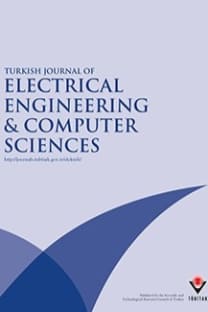Control of soil moisture with radio frequency in a photovoltaic-powered drip irrigation system
Solar-powered irrigation systems are becoming increasingly widespread. However, the initial setup costs of these systems are very high. To reduce these costs, both the energy usage and the prevention of losses from irrigation systems are very important. In this study, a drip irrigation control system of 1000 dwarf cherry trees was controlled using soil moisture sensors in order to prevent excessive water consumption and energy losses in a solar-powered irrigation system. The control system comprises units that are energized with solar panels, and the flow of information is implemented via radio frequency. Thus, by removing the cables that create difficulties in the cultivation of gardens, both the easy cultivation of the soil is enabled and cable costs are eliminated. The portability of the units is enabled by using solar energy; thus, units might be mounted wherever the user wishes. It has been indicated that the moisture of the application area varies depending on the data obtained regarding volumetric water content and the defined area in need of irrigation. In this way, there are reductions in the dependence on instantaneous water demand, the amount of water to be pumped, and the energy requirements needed for irrigation. In addition, pump power and the power of the motor that drives the pump are also reduced. According to the obtained measurement values, it was calculated that hourly water demand decreased by 36%. Thus, the numbers of solar panels, electrical machines, batteries, and units of power control that supply all the energy of the system and constitute a large part of the initial setup costs are reduced at the same rate by means of the applied technique. Thanks to the developed site-specific irrigation system, unnecessary energy consumption was avoided. Along with the elimination of excessive and unnecessary irrigation, problems with trees were also eliminated.
Control of soil moisture with radio frequency in a photovoltaic-powered drip irrigation system
Solar-powered irrigation systems are becoming increasingly widespread. However, the initial setup costs of these systems are very high. To reduce these costs, both the energy usage and the prevention of losses from irrigation systems are very important. In this study, a drip irrigation control system of 1000 dwarf cherry trees was controlled using soil moisture sensors in order to prevent excessive water consumption and energy losses in a solar-powered irrigation system. The control system comprises units that are energized with solar panels, and the flow of information is implemented via radio frequency. Thus, by removing the cables that create difficulties in the cultivation of gardens, both the easy cultivation of the soil is enabled and cable costs are eliminated. The portability of the units is enabled by using solar energy; thus, units might be mounted wherever the user wishes. It has been indicated that the moisture of the application area varies depending on the data obtained regarding volumetric water content and the defined area in need of irrigation. In this way, there are reductions in the dependence on instantaneous water demand, the amount of water to be pumped, and the energy requirements needed for irrigation. In addition, pump power and the power of the motor that drives the pump are also reduced. According to the obtained measurement values, it was calculated that hourly water demand decreased by 36%. Thus, the numbers of solar panels, electrical machines, batteries, and units of power control that supply all the energy of the system and constitute a large part of the initial setup costs are reduced at the same rate by means of the applied technique. Thanks to the developed site-specific irrigation system, unnecessary energy consumption was avoided. Along with the elimination of excessive and unnecessary irrigation, problems with trees were also eliminated.
___
- unnecessary water and energy usage were avoided. Hourly water demand was reduced by 36% with the developed system; thus, it was observed that installation of solar panels, power levels of the motor and pump, and values of the motor’s power control equipment could be reduced in the same proportion. As a result of using solar energy to meet the energy demand, the applicability of the developed system is increased, and the usage of local sources is also enabled.
